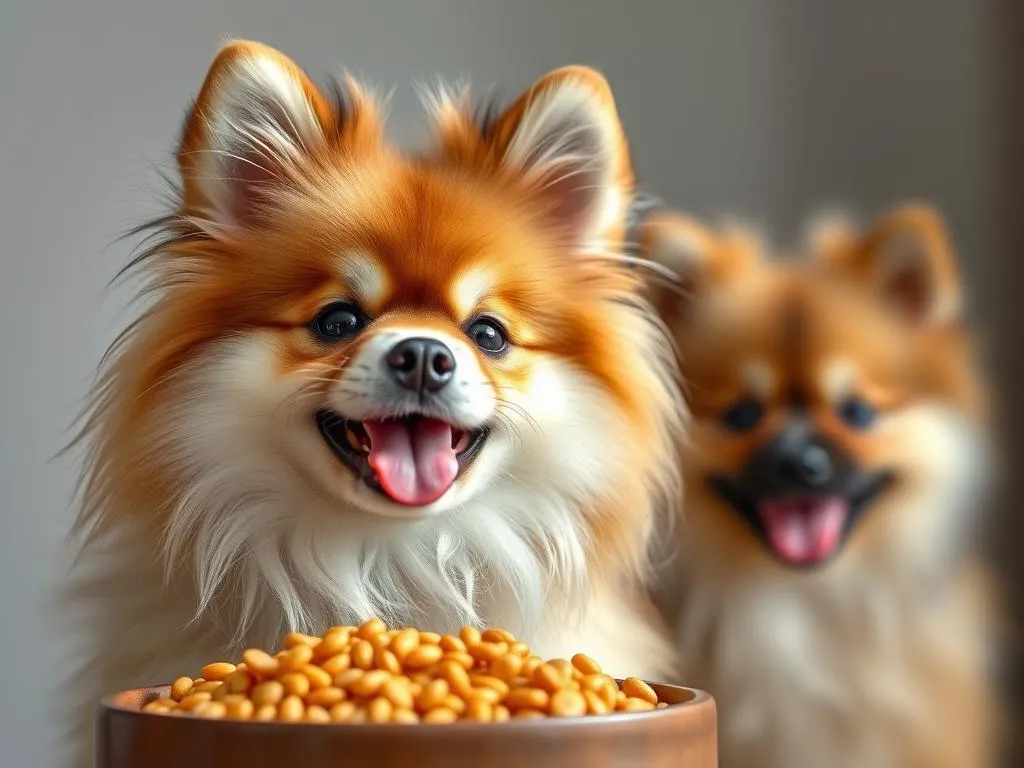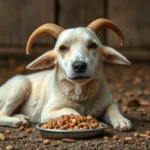
Introduction
The Pomsky is a delightful hybrid breed, resulting from the cross between a Pomeranian and a Siberian Husky. This captivating mix boasts a striking appearance, often resembling a miniature Husky with fluffy fur and vibrant blue or multicolored eyes. With their playful nature and intelligence, Pomskies have surged in popularity among dog lovers.
However, with their unique traits and energy levels, ensuring proper nutrition is critical for the health and longevity of Pomskies. A well-balanced diet contributes to their overall well-being, maintaining their energy levels and supporting their playful personalities. This article serves as a comprehensive guide to help dog owners navigate the best dog foods for Pomskies, ensuring their furry companions thrive.
Understanding Pomsky Nutritional Needs
Nutritional Requirements
Understanding the essential nutrients required for Pomskies is key to providing them with a balanced diet:
-
Proteins: Vital for muscle development and repair, proteins are the building blocks of a Pomsky’s body. Look for high-quality protein sources like chicken, beef, and lamb in dog food.
-
Fats: Healthy fats are crucial for providing energy and keeping the coat shiny and healthy. Omega-3 and Omega-6 fatty acids from fish oil or flaxseed can significantly benefit a Pomsky’s skin and coat.
-
Carbohydrates: While not as essential as proteins and fats, carbohydrates provide a good energy source and aid in digestive health. Look for whole grains and vegetables that are easy to digest.
-
Vitamins and Minerals: These micronutrients play a vital role in maintaining overall health, supporting the immune system, and promoting proper growth and development.
Age-Related Nutritional Needs
The nutritional needs of Pomskies change as they age, necessitating different diets at various life stages:
-
Puppy Stage: Nutritional demands are at their peak during this stage. High-quality puppy food rich in proteins and fats is essential for growth and development.
-
Adult Stage: Maintenance of health and weight becomes the focus. Balanced adult dog food, suitable for their size and activity level, is essential to prevent obesity.
-
Senior Stage: As Pomskies age, their metabolism slows, and they may develop health issues. Senior dog foods, often lower in calories and enriched with joint-supporting ingredients, are advisable.
Types of Dog Food
Dry Dog Food (Kibble)
Dry dog food, or kibble, is one of the most common types of dog food available.
Benefits:
– Convenient to store and serve.
– Can help maintain dental health by reducing plaque buildup.
Drawbacks:
– Some kibbles may contain fillers and low-quality ingredients.
Recommended Brands for Pomskies:
– Orijen: Known for its high protein content and quality ingredients.
– Wellness Core: Grain-free and rich in nutrients.
– Blue Buffalo Life Protection: Offers balanced nutrition with high-quality proteins.
Wet Dog Food (Canned)
Wet dog food comes in cans or pouches and is often more palatable for dogs.
Benefits:
– Higher moisture content helps with hydration.
– Generally more appealing to picky eaters.
Drawbacks:
– Typically more expensive than kibble.
– Shorter shelf life once opened.
Recommended Brands for Pomskies:
– Hill’s Science Diet: Offers recipes tailored for specific health needs.
– Royal Canin: Known for breed-specific formulas.
– Merrick Grain-Free: High-quality ingredients with rich flavors.
Raw Diet
The raw food movement advocates feeding dogs a diet based on raw meat, bones, and vegetables.
Overview: This diet aims to mimic what dogs’ ancestors ate in the wild.
Pros:
– Nutrient-dense and can lead to healthier skin and coat.
– May improve dental health.
Cons:
– Requires careful handling and preparation.
– Risk of bacterial contamination if not managed properly.
Home-Cooked Meals
Preparing home-cooked meals for Pomskies can be a rewarding endeavor.
Benefits:
– Customizable to meet specific dietary needs and preferences.
– Control over ingredient quality.
Key Ingredients for a Balanced Diet:
– Lean meats (chicken, turkey, beef)
– Vegetables (carrots, peas, spinach)
– Whole grains (brown rice, oats)
Factors to Consider When Choosing Dog Food
Quality of Ingredients
The quality of ingredients in dog food is paramount. Whole foods should be prioritized over fillers.
How to Read Dog Food Labels:
– Look for named animal proteins as the first ingredient.
– Avoid foods with vague terms like “meat by-products.”
– Ensure a balance of protein, fat, and carbohydrates.
Allergies and Sensitivities
Pomskies can be prone to certain allergies and food sensitivities.
Common Allergens:
– Grain (wheat, corn)
– Beef and chicken
– Dairy
Signs of Food Allergies:
– Itchy skin or hot spots
– Digestive upset (vomiting, diarrhea)
Life Stage and Weight Management
Choosing dog food based on life stage is essential. Puppies require more calories and nutrients, while seniors need less.
Importance of Portion Control:
Proper portion sizes help maintain a healthy weight, preventing obesity-related issues.
Recommended Dog Foods for Pomskies
Top Dry Dog Foods
- Orijen Puppy: High protein, grain-free, and rich in omega fatty acids for healthy skin and coat.
- Taste of the Wild High Prairie Canine Recipe: Unique protein sources and fruits and veggies for antioxidants.
- Merrick Grain-Free Texas Beef & Sweet Potato: Rich in quality protein with healthy grains.
Top Wet Dog Foods
- Wellness CORE Grain-Free: High in protein and made with premium meats.
- Royal Canin Pomsky Adult: Tailored for the specific needs of Pomskies, ensuring balanced nutrition.
- Nutrish Zero Grain: Grain-free with wholesome ingredients and no artificial additives.
Top Raw Diet Options
- Instinct Raw Boost Mixers: Freeze-dried raw pieces for added nutrition.
- Stella & Chewy’s Meal Mixers: Convenient raw food option that adds nutrition to kibble.
- Primal Pet Foods: Offers a range of raw freeze-dried formulas for easy feeding.
Home-Cooked Meal Suggestions
Sample Recipe:
1. Chicken and Veggie Bowl: Cooked chicken breast, brown rice, and a mix of carrots and peas. Ensure it’s seasoned only with dog-safe herbs (no salt).
2. Beef and Sweet Potato Stew: Ground beef, sweet potatoes, green beans, and peas simmered until tender.
Nutritional Balance:
Ensure a mix of proteins, vegetables, and healthy grains to provide a complete diet.
Common Misconceptions About Dog Nutrition
Many misconceptions surround dog nutrition.
Myths vs. Facts:
– Myth: All dog foods are created equal.
– Fact: Ingredient quality varies significantly, impacting health.
- Myth: Dogs can thrive on a vegetarian or vegan diet.
- Fact: Dogs are omnivores but require specific nutrients that may be lacking in plant-only diets.
Importance of Consulting with a Veterinarian:
Regular consultations with a veterinarian can guide dietary choices tailored to a Pomsky’s unique needs.
Conclusion
The importance of choosing the right food for Pomskies cannot be overstated. Proper nutrition not only supports their health but also enhances their overall quality of life. Whether opting for high-quality kibble, a raw diet, or home-cooked meals, understanding individual needs and preferences is crucial. By making informed decisions, dog owners can foster a healthy diet for their Pomskies, ensuring they live happy, vibrant lives.









